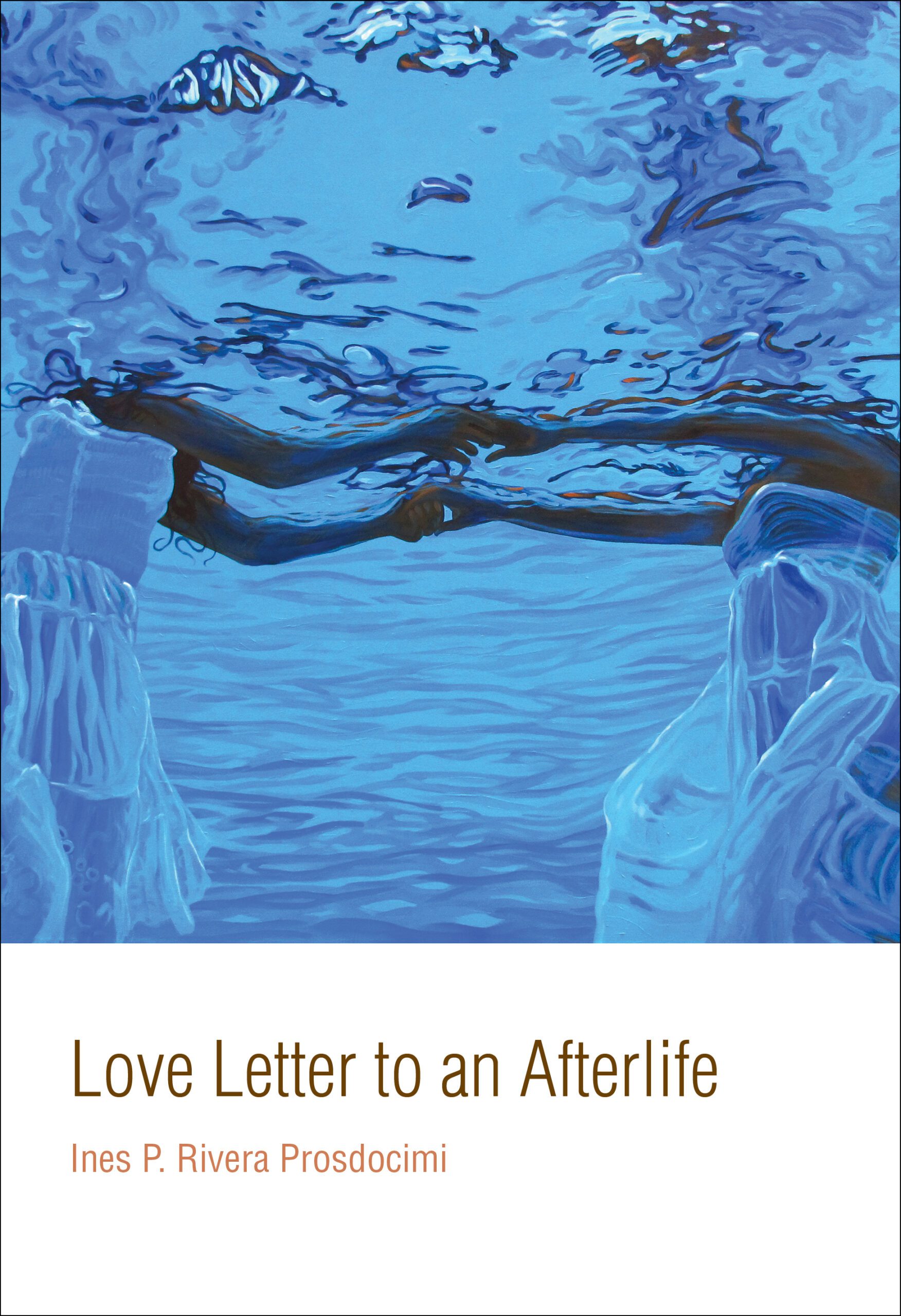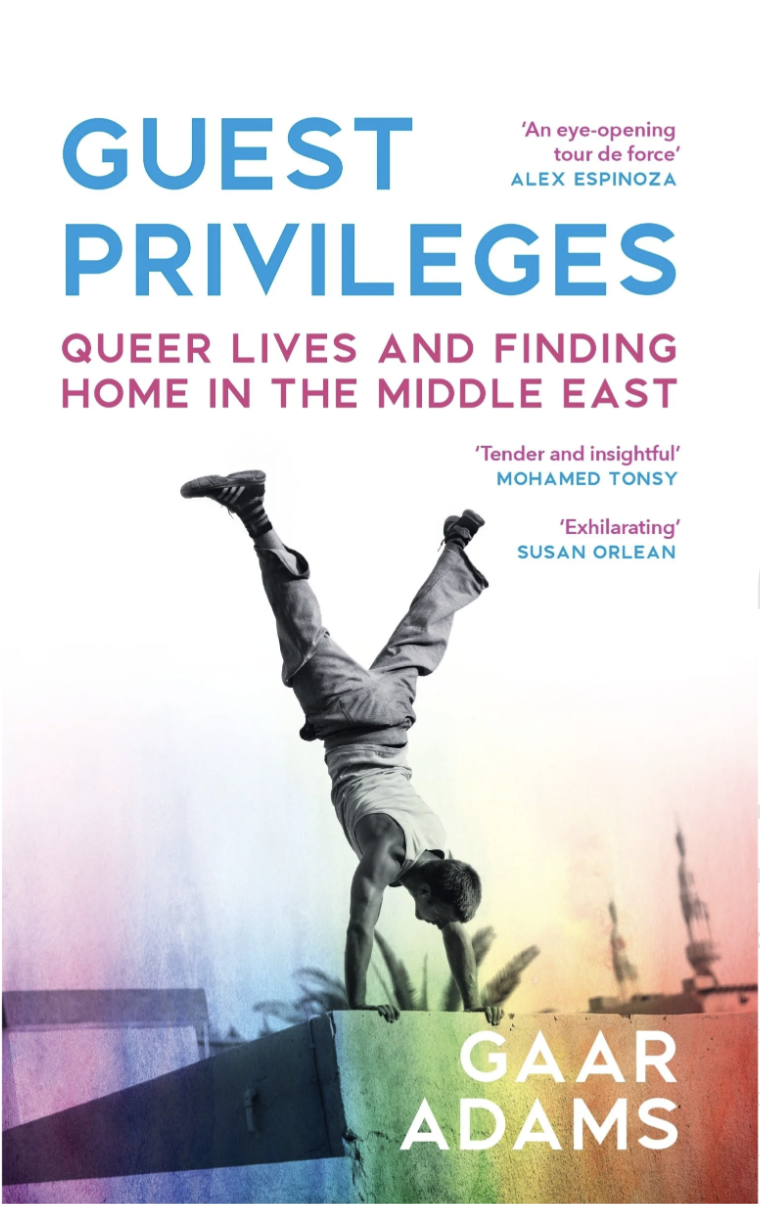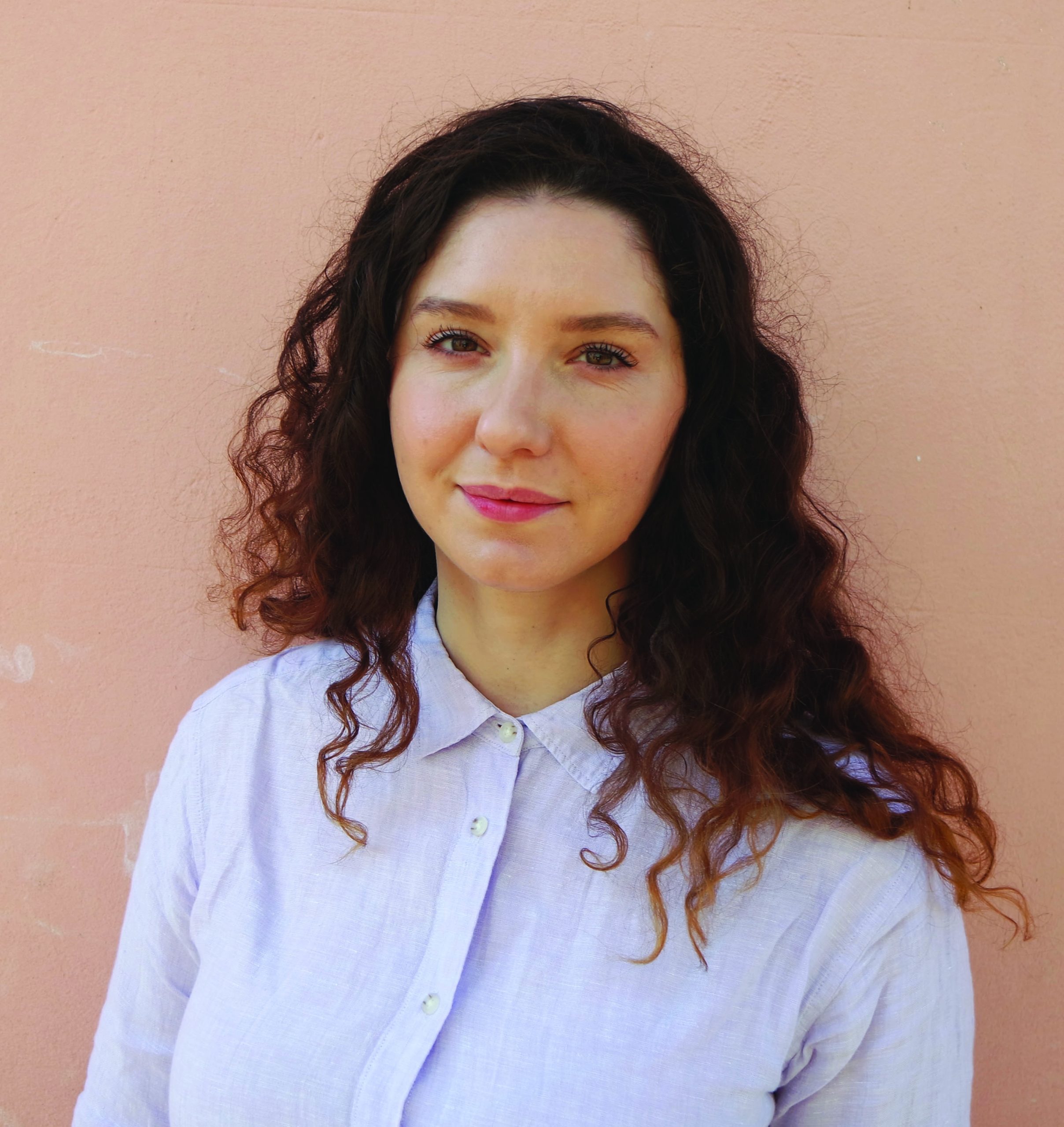In Ines P. Rivera Prosdocimi’s debut poetry collection, Love Letter to an Afterlife, the speakers in the poems are displaced in time, yearning for a half-imagined past. They are suspended between cultures, languages and racial designations. It’s a collection animated by memories of her native Dominican Republic, and most of all, by family, living and dead. It’s a displacement that feels ancient, but also thoroughly modern.
I first met Rivera Prosdocimi in 2008 at a literary conference in Accra, Ghana. It was my first time on the continent, home to my presumably kidnapped ancestors, presumably brought to the Caribbean to work for free, people I yearned for but will never know. I felt a displacement and longing similar to the one expressed in Rivera Prosdocimi’s collection. Perhaps that’s why I felt an immediate kinship with the poet and her work. From Rivera Prosdocimi’s poems we learn that for all of us identity is a building that is forever being constructed.
Rivera Prosdocimi’s work has been published in Bellevue Literary Review, Kweli, Nimrod, and Poet Lore, among other publications. She earned a PhD in Comparative Literature in from University of Maryland and an MFA from American University.
Recently, we discussed the shifting nature of identity, writing to reconcile the often brutal nature of history, creating art in multiple genres and mediums and what it’s like to work on a single poem for two decades.
***
The Rumpus: When I read these poems I get a real sense of longing, for days passed in places far off (in this case the Dominican Republic, mostly) that the speaker knows will never return. It makes me think of my grandmother (who ironically shares a version of your name) and how she would always refer to her native Trinidad as home even though, I think, she knew she’d been gone so long it wasn’t really home anymore. How much did that feeling of longing play into the drafting of these poems?
Ines P. Rivera Prosdocimi: “Yearning” is active, intense. The term underscores a kind of urgency that can be felt in this collection, an urgency to preserve the past. Many of the poems were written during a period where almost an entire generation in my family passed away. When someone dies, you expect to no longer see them but you might not expect their absence to coincide with physical changes in your home, in the community, in the country itself. It was jarring for me to go back to the Dominican Republic and find that my grandmother’s home, a hub for the family, no longer held traces of the relatives who shaped me.
The changes in my home were even more jarring because they mirrored the rapid changes in the DR. It was developing so fast that sometimes I didn’t know where I was in Santo Domingo, a city that I navigated with some ease when I was a teenager. Development also translated into beaches newly claimed by foreign-owned hotels so that places on Dominican soil and packed with family memories became off-limits. Many of my friends started leaving the island for New York, Miami, and Madrid as well. My home has always been plural but at least I had relatives and friends that gave me a sense of belonging, something that I did not always feel in the US, or even in the DR and in Argentina. Like your grandmother, in many ways I couldn’t return to a home, or perhaps more specifically, to the people and the community that I remembered. Poetry became a way to come to terms with this realization.
Rumpus: These sorts of realizations can be jarring; it’s almost like coming to a new conception of self. How much distance from this new realization and from the DR did you need to write these poems?
Rivera Prosdocimi: Most of these poems were written in DC or Virginia. I think the physical distance afforded me some emotional distance which gave me the space to cope with and reflect on the loss of some of my relatives. Distance also gave me the space to come to terms with a DR that very much exists only in my mind. What’s interesting is that when I wrote some of these poems, the DR seemed very immediate, as though I’d never left it. But finding a DR in the US and vice versa has been a constant for me. Memory has the ability to do that, to make you a time traveler of sorts, to collapse spaces.
Rumpus: That makes me wonder how these poems were written. Were they one-offs until you saw these themes and these places and people emerge or did you write them as a collection?
Rivera Prosdocimi: During my graduate studies, I was lucky to be in a program that gave me the opportunity to participate in both fiction and poetry workshops. I went in with the goal of writing a novel and a poetry collection. My primary focus had been on my novel which takes place in the DR. I crafted it so that a poem introduced each chapter. Jean Toomer’s Cane had inspired me, as well as Gayl Jones’s Corregidora. Both texts mix or blur the borders between genres. Interestingly, some of the poems from my novel made it into the collection. I realized that even in my fiction I was exploring the idea of a plural or shifting home, as well as family dynamics. The novel also gave me an opportunity to map my childhood in the DR as I reimagined my characters in different spaces; this inspired more poems.
At the end of my program, I had a finished draft of the collection but I kept adding poems to it, revising and deleting poems, and changing the order of the poems. Sometimes two poems were actually one poem, or I’d realize that only a single line in a poem worked, so I’d save the line for later or use it to generate a new poem. Sometimes physical distance doesn’t provide enough emotional distance.
The poem “Migrations,” for example took me at least two decades to finish. A poem like “At Home in the Modelo Market,” is a poem from the future. I wrote it for my book and I didn’t exactly know what I wanted to communicate precisely, but I knew I had something. There are poems written during my PhD that possess a complexity that’s different than some of my earlier poems. I’m thinking in particular of “Are the Clouds Really Moving,” for example. My doctoral studies made me more hyperaware of why I revisit certain themes, and the techniques other writers have used to explore or interrogate similar themes. It also made me more aware of poetry as a way to revise history, magnify silenced histories, or show the artificiality of constructs.
Rumpus: “Migrations” is such a layered poem—personal history, family history, national and world history all colliding.
Father speaks to me in English but keeps our language with my siblings./ Father won’t read this poem, and still resents my marriage to an Argentine/ Jewish fellow, a white man who will never fully know how I walk/ through the world.
It’s one that jumped out at me and probably one of my favorites. It’s fascinating that it took at least twenty years to get right. I’ve had stories take about half as long to get done and it can be maddening. I’ve even abandoned some after a decade. What is it about that poem that gave it such a long gestation process? How did it evolve? What kept you from abandoning it?
Rivera Prosdocimi: Sometimes you are not in the right headspace to do the “inside” work that a poem might require. Writing can fill you with anxiety, and it can be painful and uncomfortable. Ironically, I find that some of my strongest poems, though, are those that filled me with the most amount of anxiety or even fear during the drafting process. These sensations keep me from abandoning a poem. They are like little flags telling me that I’m on the right track, I’m invested.
We view and understand our parents differently as adults compared to when we are children. We also view and understand our parents differently if they get sick and we’re forced to contend with “mortality.” It’s very easy to reduce a parent to a “villain” or an authoritarian figure, especially if they give you a reason. I think it’s more accurate to view them as humans with histories we’re not entirely privy to; individuals who can be both weak and strong, who can cause pain and joy intentionally and unintentionally, and who can be cold and unbending but nurturing and loving. “Migrations” gave me the opportunity to explore the intricacies of a father-daughter relationship, but also generational and cultural clashes. For me, the poem is metaphorical. It’s not just a poem that maps the ups and downs of my relationship with my dad or collapses the DR and the US; it’s also a mapping of the way I came to understand my dad, someone who has had really different life experiences compared to mine and who doesn’t always show his love through words, but through actions and specifically, food.
Rumpus: Along with the personal notes, this poem alludes to history with its mentions of Trujillo. This is not the only place history, specifically the often brutal history of the DR, intersects with your work. How do you engage with that history to make your poems.
Rivera Prosdocimi: A country like the DR, Argentina, or the United States can possess a culture of silence. Poetry gives me a space to explore and uncover silences in history. Often, silences that exist within a family mirror the larger project of silencing within a nation. Both of my parents grew up in time periods and in countries where you had to pick your words very carefully for fear that they might be misinterpreted as subversive. Consider how that practice influences the way that family members across generations communicate with one another. Consider how the past has a way of re-inserting itself in the present day. There’s a line in the poem “Slapping Bones” that alludes to the fact that the house next door to my grandmother’s once belonged to a writer who was made to “disappear” during the Joaquin Balaguer years; Balaguer was Trujillo’s right-hand man. There are people on the block who still remember Narcisazo Gonzalez. I find it interesting how I didn’t know this story until I was older, and especially, how the house, decades after his disappearance, still remains unclaimed. Every so often a newspaper will report “it’s been twenty years… twenty-seven years since Narcisazo’s disappearance.” What’s been referred to as a “history from below” eventually surfaces. Poetry can aid in that surfacing, but it’s also where one can connect this larger public phenomena to the local, private sphere of the neighborhood, home, or family. Narcisazo’s home wasn’t just a reminder of his absence or murder, but it was where my best friend lived, where we’d play dominoes at night, or watch kids playing in the street.
If I think of the poem “Are the Clouds Really Moving,” for example, history comes to the forefront. It’s a poem that draws our attention to colonial legacies and how they’ve resurfaced in the present-day in really brutal ways. The poem focuses on Tulile, a Haitian shoe-shiner who was lynched in a park in Santiago. The circumstances surrounding his death have been debated, but the plain fact is that this was a modern-day lynching and that it took place during the time when the Dominican government had stripped the citizenship of anyone who was born to undocumented parents. Haitians and Dominican-Haitians were specifically targeted in this decision. The poem bears witness to Tulile, who I try to humanize by imploring the reader to see him, to see what’s been done to a man who was making a life in the DR, to imagine him as a man loving and holding a woman, who takes the form of the Dominican national flower. There was a silencing surrounding this murder. To the best of my knowledge Tulile’s full name was never printed, rather his nickname. So the poem tries to unsilence his story, but also situates his victimization within a long history of white supremacy in the DR and in the US.
Rumpus: You’re also a visual artist. The color imagery in these poems kept jumping out at me. There’s the recurring image of the flamboyan tree. Did your work as a visual artist have an influence on these poems?
Rivera Prosdocimi: Yes, it did. With art, I like to be precise in how I capture the human form but there’s got to be an anomaly, an element of spontaneity to the composition. Spontaneity is actually something you produce with practice. It’s somewhat calculated much like a poem is revised so that every word counts, every line break is deliberate, so that there’s a sense of effortlessness. Visual art and poetry rely on the same thing—the power of image. Like in art, imagery carries a poem; each image that appears should take the poem to a new place or raise the stakes. I like to draw in my poems. I want the imagery to be lush, to have a tactile quality or at least appeal to some of the senses. I’m aware of things like light and shadow, scale, weight, and texture when I craft an image in a painting, as well as in a poem.
Rumpus: Are you still working on that novel that you were writing in tandem with these poems? How has it evolved now that some the poems from it are living in your collection?
Rivera Prosdocimi: I haven’t been working on it, but I plan to go back to it. The book fluctuates between the past and present, and is told from three perspectives , two siblings and a friend who grow up together in Santo Domingo. It plays with the theme of imprisonment, with being confined literally and psychologically by racial, gender, and sexual constructs. It’s interested in uncovering how a man could be institutionalized, even within his own home, for being gay, as well as the silencing surrounding his imprisonment. Distance from the novel has given me new ways to approach it.
These last five, six years, I’ve been stealing time for my poems while trying to finish my dissertation, which revisits revisionist histories, border crossing (in all of its manifestations), and national identity. In my research I analyze maroon narratives, tracing slaves who rebel in the sixteenth and seventeenth centuries and their modern manifestations. Again, I’m interested in how literature intervenes in an “official” history but also what it reveals about the human condition. What I find with maroons is that they are almost always accompanied by mythmaking and metamorphoses. These are characters who can often be claimed by more than one nation and who evolve physically and psychologically as they rebel. Imagine a maroon, for example, who changes gender or takes the shape of any animal or the four elements. With this power, they become synonymous with multiplicity, something we’re not always comfortable with in the US—the idea that someone belongs to two or more nations, or that identity isn’t set in stone but rather, actively made. There’s also something to be said about the mythologizing of these characters, who are often based on or inspired by historical figures; mythologizing has helped preserve histories. I’m working on a new poetry collection that examines the power of myths and how stories have survived through an oral tradition or an afro-christian belief set. I’m revisiting the folktales and legends I grew up with, and, in particular, the stories of silenced women, who have been preserved through mythmaking.
My creative writing and research overlap. In many ways, I’m approaching the same themes but through different modes of writing and different forms of literature. I also highlight themes such as border crossing, diaspora, transnationalism, gender fluidity, intersectionality, and othering in the classes that I teach. In light of today’s political and social climate, it’s important for me to encourage my students to engage with characters that they might not necessarily identify with but who share universal experiences such as falling in love or grieving the loss of a loved one. It’s also important to present them with characters, who demonstrate that there’s more than one way to be “American,” that people can be simultaneously multiple things and that’s okay.
***
Photograph of Ines P. Rivera Prosdocimi © Seshu Badrinath.





